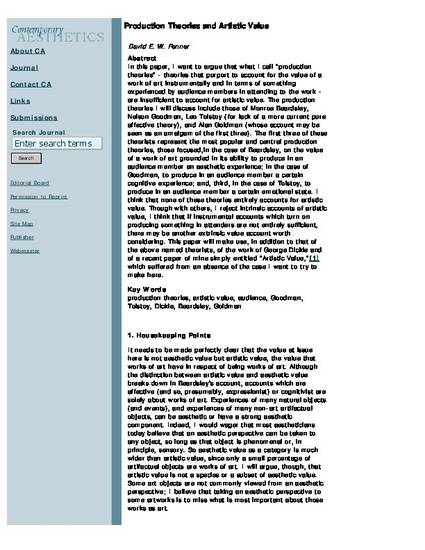
In this paper, I want to argue that what I call "production theories" - theories that purport to account for the value of a work of art instrumentally and in terms of something experienced by audience members in attending to the work - are insufficient to account for artistic value. The production theories I will discuss include those of Monroe Beardsley, Nelson Goodman, Leo Tolstoy (for lack of a more current pure affective theory), and Alan Goldman (whose account may be seen as an amalgam of the first three). The first three of these theorists represent the most popular and central production theories, those focused, in the case of Beardsley, on the value of a work of art grounded in its ability to produce in an audience member an aesthetic experience; in the case of Goodman, to produce in an audience member a certain cognitive experience; and, third, in the case of Tolstoy, to produce in an audience member a certain emotional state. I think that none of these theories entirely accounts for artistic value. Though with others, I reject intrinsic accounts of artistic value, I think that if instrumental accounts which turn on producing something in attenders are not entirely sufficient, there may be another extrinsic value account worth considering. This paper will make use, in addition to that of the above named theorists, of the work of George Dickie and of a recent paper of mine simply entitled "Artistic Value,"[1] which suffered from an absence of the case I want to try to make here.
Available at: http://works.bepress.com/david_fenner/25/
